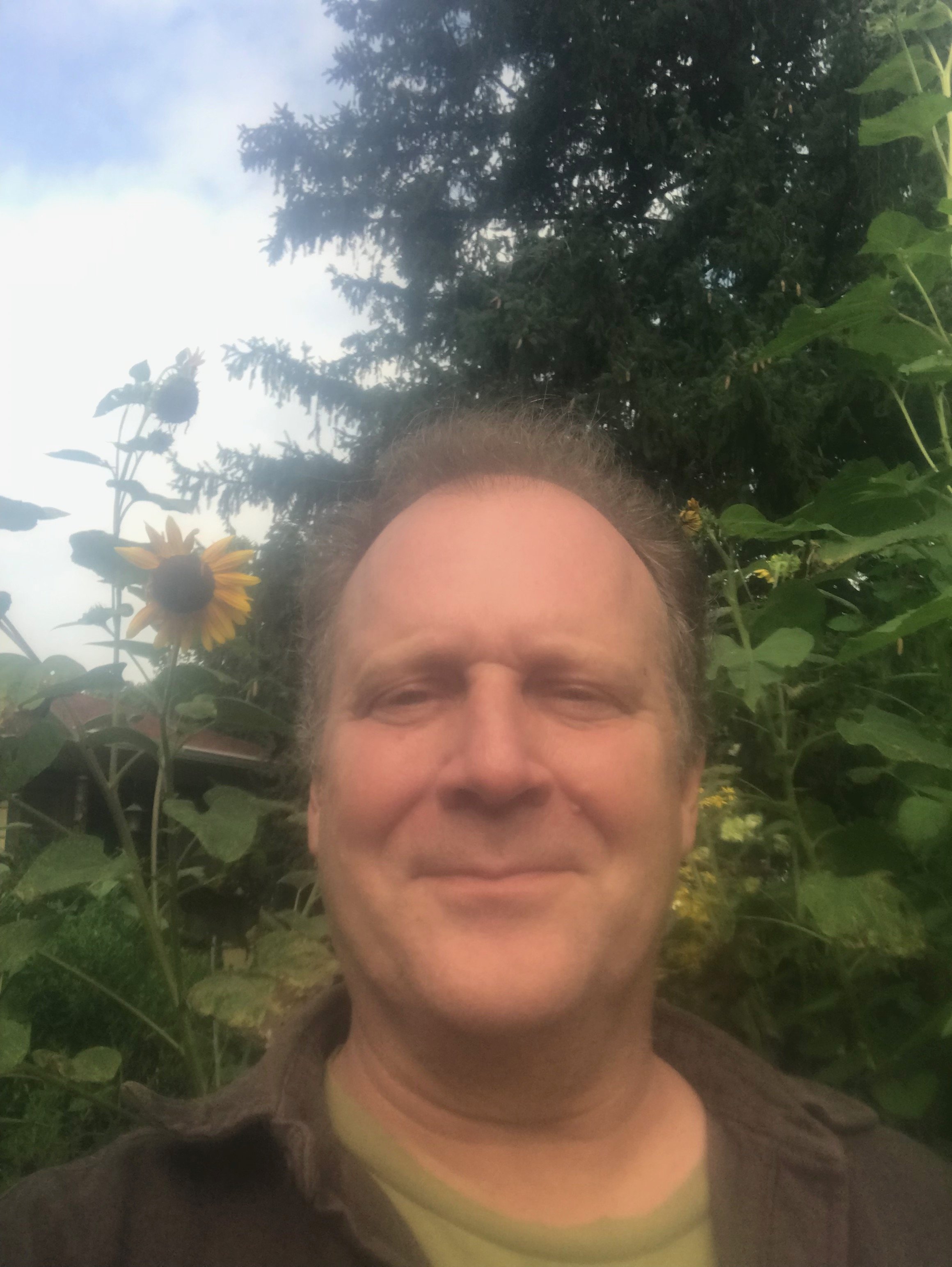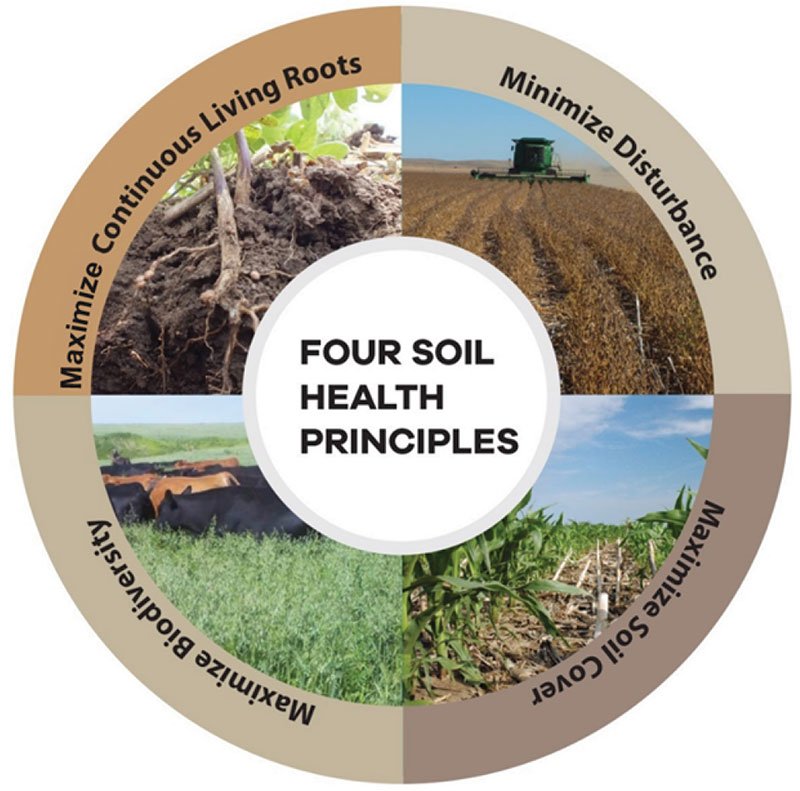Company seeks to support healthy soil ecosystems
Anyone into farming or gardening, is familiar with the term composting. Although, many may have their own approach to this practice of creating nutrition for their soil.
What some might not know, is that there is a certain balance needed in the compost to sustain a healthy biological ecosystem that is conducive to growing.
One business is working to educate and help agriculturists learn about soil and composting that is deeper than what most are aware of.
Brothers Erik and Chris Harris founders and owners of Clear View Regenerative Farms and Services (CVRFS) based in Minnesota, aims to accomplish just that. Both 5th generation farmers from Minnesota, Erik and Chris founded CVRFS in 2013 and established it as an LLC in 2017.
A more service-oriented business, Clear View stresses farming techniques from an agro-ecology stand point. “More or less, we focus on educating individuals, farmers and farming groups, on the benefits and value of utilizing the soil food web in part of their farming techniques,” said Erik. CVRFS emphasizes the benefits of regenerative agriculture which is a land management technique that uses a holistic approach to regenerate land and growing fields with the goal of improving soil and ecosystem health. There a four commonly accepted principles of regenerative agriculture:
Reduce soil disturbance – Tilling soil can disrupt microorganism activity and lead to compaction. By reducing tillage, farmers are able to increase soil activity and preserve soil’s natural structure.
Maximize soil cover – Keeping constant cover on soil will help prevent erosion from both water and wind. This is integral to preserving soil for years to come.
Constant living roots – Similar to maximizing soil cover, living roots help prevent erosion. In addition, they increase living activity underground which nourishes the soil.
Biodiversity – Diversification can be increased through a variety of approaches such as cover crops and/or grazing animals. In all forms, biodiversity helps break disease patterns and provides healthy habitats for all organisms.
He explained the basis of the soil food web is being able to look at your soil in a way that incorporates the biology and chemistry of the soil. “In other words, we're looking at whether or not the soil has certain amounts of organic matter certain amounts of macro and micronutrients. Micronutrients being sulfur, zinc, magnesium, calcium, and so forth. So, the approach in the agricultural setting has not been looking at soil as a living, cycling entity, an ecosystem itself. So, the food web utilizes microscopic technique (About a year ago, Erik was certified to do the microscope analysis.) to take samples of the soil and determine whether or not there's biology in the soil. A healthy soil has multiple trophic levels and a high diversity of organisms and will cycle nutrients for the plant.”
Furthermore, Erik explained there's an interaction between the plants and the organisms in the soil. “It's actually plant directed and those organisms then cycle the nutrients from the parent material in the soil. Bacteria and the fungi in particular, decompose minerals out of the soil upon the direction of the plant. And when they consume those minerals, they either pass it along to the plant and or they're eaten by the next tropic levels. So, for instance, there is a nematode that likes bacteria also a nematode that likes fungi, if those nematodes consume those bacteria or they die, will excrete nutrients that the plant can uptake.”
To properly analyze the biology of soil, samples are taken and viewed under a microscope to see exactly what the soil’s biology is, what it contains and what it lacks in order to be in a balance that allows the soil and plants to work together. Long story short, the job of the soil food web is balancing the soil biology so that it favors a preferred crop.
This is where composting plays a crucial role. Erik said a compost would be made and then analyzed to determine if it contained the biology needed to help change the soil. If a sort of homeostasis is reached within the compost, then teas or extracts are made from the compost and applied to the soil through spraying or injection.
Erik pointed out that there have been multiple case studies in which multiple 1000-acre farms around the world that adopted this technique, ultimately shifting soil disaster into an ongoing and sustainable farming enterprise.
“This is relatively new for me in terms of actually putting it into practice. I've studied as a biologist and ecologist this relationship, the biology to plants and so forth. Putting it into practice utilizing this compost is new for me and really actually new to the farming community”.
Change though can sometimes be hard, especially for farmers that have been farming the land for generations a certain way. Erik said that most farms that he interacts with do have an interest in soil health and some of the techniques that his company presents. Some of those techniques include reducing tillage, changing your equipment so that it's not forming compaction layers, and utilizing cover crops. He acknowledged farmers learning about soil health and regenerative agriculture does present somewhat of a learning curve for them. “By in large, a majority of farmers do not know anything about this, but they certainly want to do something that improves their soil health. What has been thought to date is, if you're showing improvements in yield and growth of your plants and diminish diseases then you're working in the right direction. In the past, there was no discussion about the interactions of biology, soil, and plants.”
As for the future, Erik said, “It's expanding an understanding of what the soil food web is and what benefit it can provide for individuals. The challenge is that everybody thinks that composting is a relatively simple thing. We just throw our stuff together and we get what we need and apply it to our garden. The truth is, compost requires a good mixture that reaches 131 degrees, and making sure that you're cycling the entire pile through the 131 degrees, or you run the risk of having diseases and weed seeds in there. So, my work is to continue to expand and really demonstrate what these techniques can do. Currently I'm working on becoming a consultant on supporting farmers and their transition to utilizing the soil food web. I just recently finished phase one of the training where I've put together three compost piles that have gone through the thermal cycling. My next step is to work with the liquids that come from those composts, building up extracts and teas and also build up certain organisms up, in particular beneficial nematodes and beneficial protozoa. Those then can be applied as needed on any plot. The third phase is going into maybe a six-month project to show how the compost teas and extracts can make changes to this project. So, I'm in the first third of the consulting phase and continuing to build a market brand and demonstration that this approach can work”.
Erik believes this is an approach that's really very different than the way people have been taught about composting to date on how to look at soil and agriculture. “It really has us looking at not just soil as a substrate to hold the plant, but as a living ecosystem that nourishes the plant and provides direct duty organisms in the soil to get what the plant needs. So, everything is plant mediated. The soil conservationist, the soil health people talk about keeping plant’s roots in soil, and if the plants are gone then all the other organisms are gone. The plants feed the organisms sugar, and they in turn happily go out and get what the plant needs. It's a beautiful system!”
For more information on Clear View Regenerative Farms and Services,visit them on the web.






